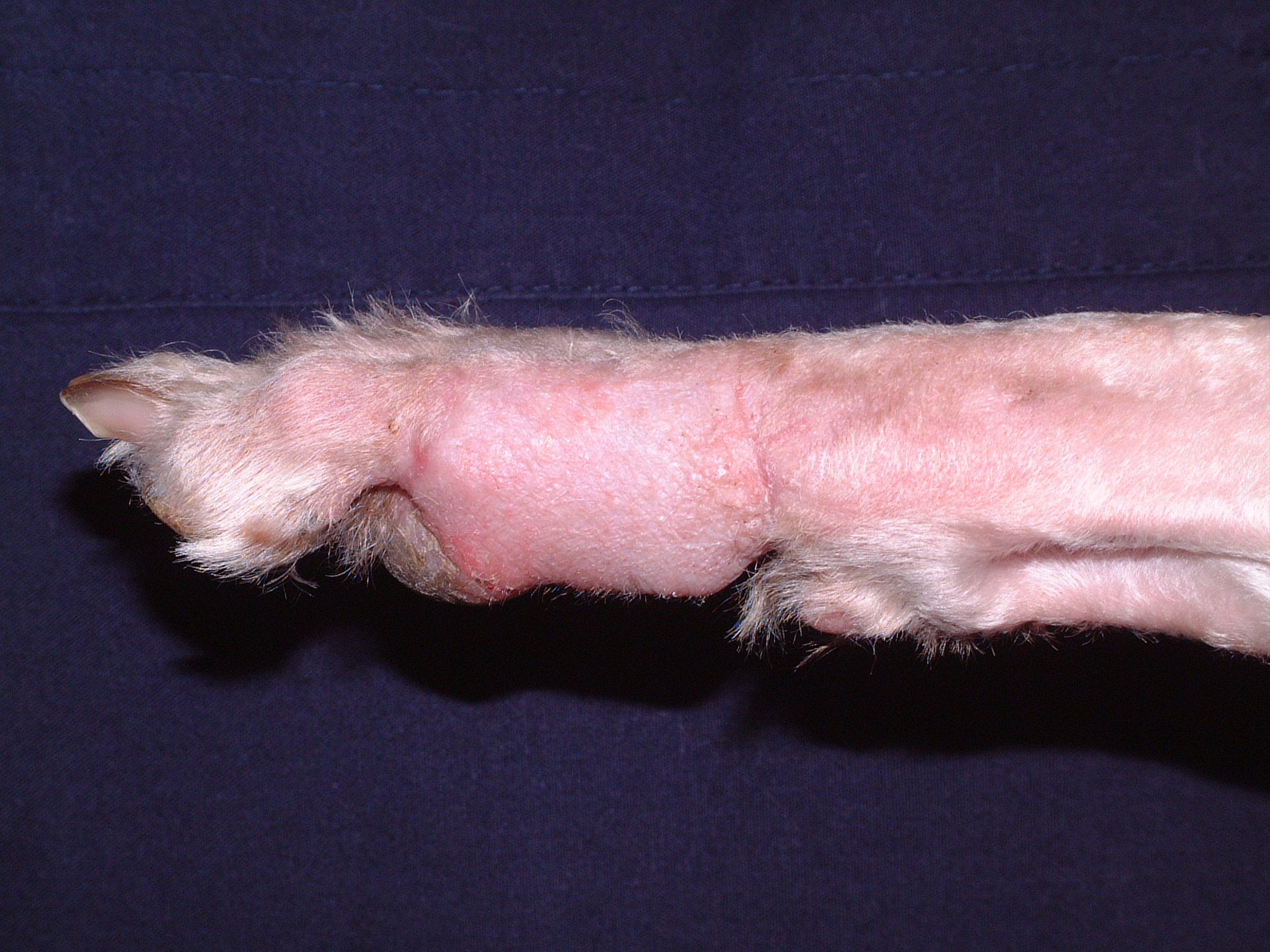DISTANT FLAPS
Distant flaps are indicated for the reconstruction of large skin defects on the extremities. There are two types of distant flaps: single pedicle (or hinge) flap and bipedicle (or pouch) flap. The initial flap survival is dependent on random blood supply via the subdermal plexus entering the base of the flap; and survival of the freed flap depends on the new circulation established from the flap healed to the recipient bed.
Distant flaps are a two-stage procedure whereby the skin defect on the limb is sutured to the body wall using either a hinge or pouch flap; the limb is then secured to the body wall in a non-weight bearing position for 3 weeks; and then the flap is released to close the remainder of the skin defect on the limb.
Complications include mild muscle atrophy, joint contracture, and lameness. In one study of 14 dogs treated with distant flaps, 100% wound coverage was achieved in 10 dogs (71%) and > 95% of the flap survived in 12 dogs (86%).
Case 1 - Hinge Flap








Case 2 - Hinge Flap








Case 3 - Pouch Flap








Last updated on 6th March 2017